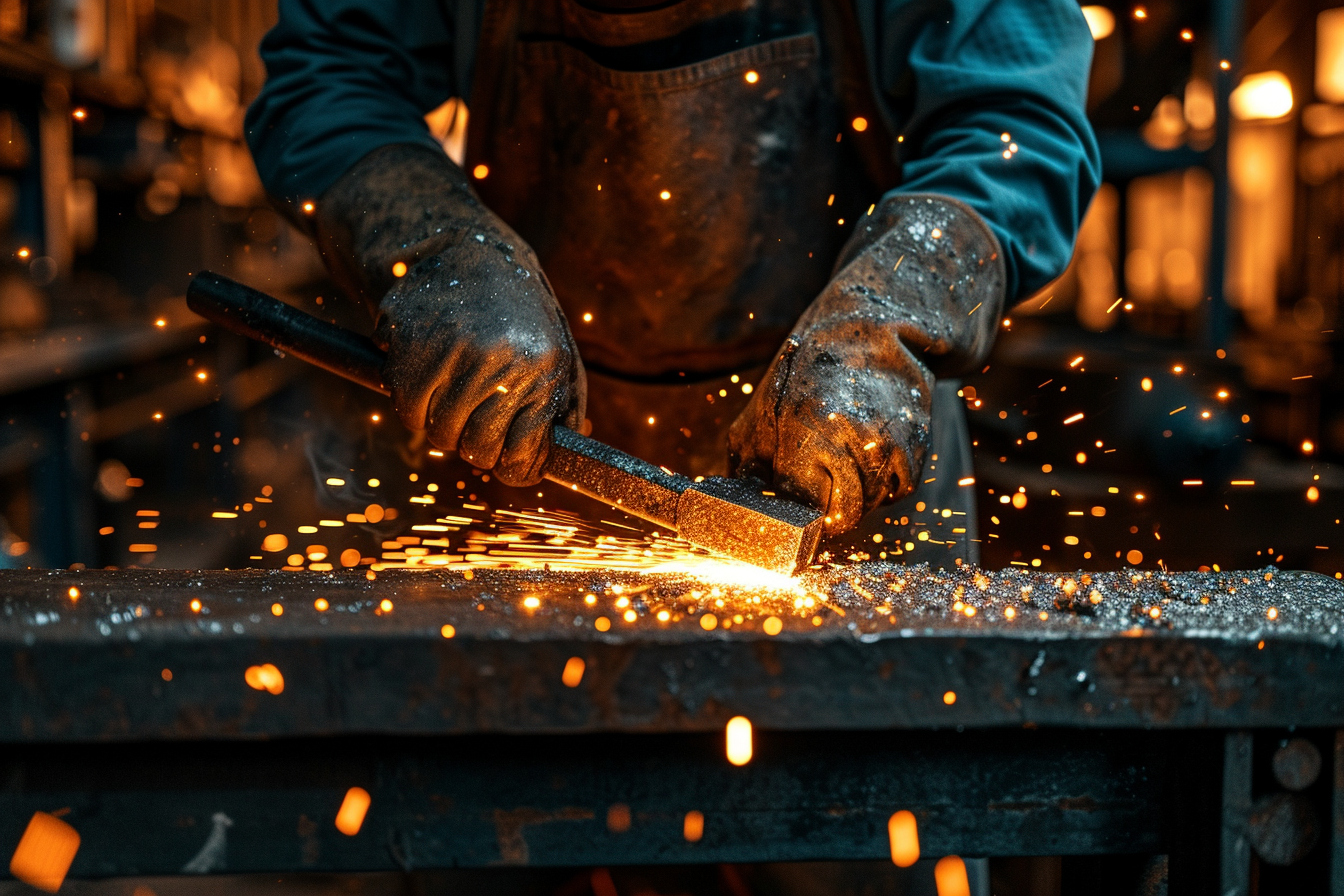Metal sculpting can transform raw, inanimate sheets and pieces of metal into expressive, dynamic works of art. If you’re new to metal sculpting, fear not. With a bit of knowledge and the right approach, you’ll soon be on your way to creating your very own metal masterpieces.
Understanding the basics of metal sculpting
Before diving into tools and techniques, familiarize yourself with the nature of metal. It’s a durable and versatile medium, capable of being welded, hammered, and molded into various shapes and structures. Each type of metal, from softer aluminum to robust steel, has unique properties that influence how you work with it.
Choosing your metal
Selecting suitable metal is crucial as it dictates your project’s feasibility and outcome. Beginners often benefit from starting with softer metals like copper or aluminum, as these materials are easier to shape and require less specialized equipment.
Setting up your workspace
Safety is paramount when working with metal. A well-ventilated workspace, away from flammable materials, combined with safety goggles, gloves, and appropriate clothing, will help mitigate the risks associated with metal sculpting.
Tools of the trade
Start with a basic set of tools and gradually add specialized equipment as your skills and needs develop. The essentials include:
- Hammers and Mallets: Different weights and shapes are used for bending and shaping the metal.
- Chisels and Punches: Utilized for making detailed cuts and designs.
- Welding Equipment: Crucial for joining pieces of metal.
- Grinders and Sanders: These smooth out rough edges and surfaces.
- Anvils and Blocks: Acting as a surface against which metal is shaped.
Investing in high-quality tools can make a significant difference in the ease and quality of your work.
Mastering metal forming techniques
Metal sculpting requires a combination of strength, precision, and patience. Master these fundamental techniques to begin shaping your creations:
Cutting and shearing
Strong scissors or shears for metal can cut through thinner sheets, whereas saws or torches may be needed for thicker pieces. Always cut outside the line of your design to leave room for fine-tuning the edges later.
Bending and folding
Metal can be bent by hand, with the help of a vice, or using a sheet metal brake for precise folds. Heat might be necessary for heavier gauges, making them more malleable.
Welding and soldering
Welding fuses metal pieces together, creating strong joints. Soldering, on the other hand, is suitable for finer, more delicate connections. Practice makes perfect with these techniques, as they both require a steady hand and a good eye for detail.
Hammering and forging
These are the oldest forms of metalworking. Hammering textures and shapes the metal, while forging, often involving a forge to heat the metal, can shape it more dramatically.
Safety first: working with metal
Emphasizing safety is crucial when handling metal and equipment.
- Protect your eyes from flying debris and intense light from welding with safety goggles or a welding helmet.
- Prevent burns and cuts by wearing thick gloves and a welder’s apron.
- Ensure proper ventilation to avoid inhaling any harmful fumes, especially when welding or soldering.
- Keep a fire extinguisher nearby in case of emergencies.
Developing your artistic vision
Envision the end result of your project, but remain flexible throughout the creative process. Metalworking often entails adaptation as you respond to the material’s behavior under your tools.
Begin with a sketch
Starting with a drawing or a small-scale model can help tremendously in visualizing your project. It also allows for adjustments before committing to the actual materials.
Building a framework
For larger sculptures, a metal armature or framework provides support for your creation. Think of it like a skeleton that holds the shape as you add more metal.
Adding textures and finishes
Textures can add depth and interest to your sculpture. Experiment with various hammers and tools to create different effects. Finishing techniques such as patinas, paints, or polished surfaces can enhance the final appearance of your project.
Learning and growing through practice
Progress in metal sculpting often involves trial and error. Each project offers opportunities to learn from mistakes and to discover new techniques.
Join workshops and classes
Hands-on experience, expert advice, and live demonstrations can be invaluable for novices. Consider signing up for classes or workshops in your area to boost your skills.
Collaborate and network
Connecting with other metal artists and enthusiasts can provide inspiration, support, and potentially opportunities to collaborate on projects.
Keep challenging yourself
Push your boundaries by attempting more complex designs or working with different types of metals as you become more confident in your abilities.
While this article cannot provide exhaustive coverage of metal sculpting, it provides beginners with guidelines on getting started with this rewarding art form. Patience, practice, and a willingness to learn from every bend, cut, and weld will shape not just metal, but also your growing skills as an artist. Crafting metal sculptures is a journey of transforming raw materials into expressions of creativity. As you forge ahead with your metalworking endeavors, remember that every masterpiece begins with a single spark of imagination — and a willingness to shape it into reality.

Leave a Reply